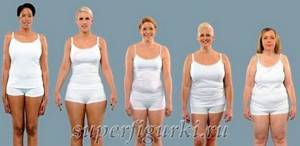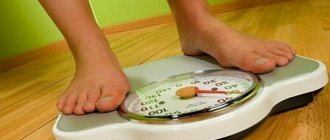Excess body weight can be observed in many people, especially since the appearance of fast food in the diet. In some, the degree of obesity is insignificant, in others the stage of the disease is expressed in tens of extra pounds. The obesity table will help you calculate the body mass index for men and women, thanks to which you can find out the stage of morbid obesity. In order to contact a nutritionist at an early stage, and not bring the gain of extra pounds to the state of a deadly morbid phase.
Body mass index formula. One hundred and fifty years of practice
This is a long enough period of time to prove effectiveness and identify a number of shortcomings.
Haven’t opponents of the BMI norm tried to challenge it?
All attempts to prove the inconsistency of this method over the course of fifteen decades have been in vain. BMI continues to be actively used throughout the world. There is no 100% alternative yet. But it should be pointed out that it is necessary to take a reasonable approach to the cult of a slim and healthy body. A template standard is a risk of leveling a person’s individuality. He does not fully take into account all the features of his body and physique.
Focus, first of all, on the main factors that serve to strengthen the health and strength of organs and systems.
This applies to both men and women. We advise everyone to exercise reasonable control over their diet and avoid significant excess weight.
BMI will help you solve this problem correctly. You will learn how to calculate it from our recommendations below.
Body type definition
Despite the fact that beauty standards have long changed and plus-size women are back in fashion, most girls who dream of modeling still exhaust themselves with diets in an effort to achieve anorexic thinness.
However, attempts to achieve the ideal do not always end in success, because there are factors that cannot be adjusted, for example, the type of constitution that is inherent at the genetic level.

The proportions of the body, the nature of the formation of the figure, as well as the development of musculoskeletal and adipose tissue, are called constitution or physique. The size and shape of a person's body are programmed in the individual genetic code, and can only be corrected through surgery.
In medical practice, there are 3 body types, for the classification of which several systems are used.
Body mass index for most people
Determining body mass index does not require special knowledge, skills or difficult mathematical calculations. The calculation formula is based on two indicators - exact weight and height.
Please note that the simplicity of the calculations does not exclude the possibility of erroneous conclusions.
In order to exclude all factors that negatively affect the results:
- Measure your height only after a night's sleep. This figure decreases throughout the day. In the evening he may “sin” by one or two centimeters.
- Use accurate scales from a reputable manufacturer. Best of all, with an electronic sensor.
- Empty your bowels and bladder before weighing.
- Measure your body weight without clothes or in underwear.
- Record as accurate readings as possible immediately after the procedure.
Note. The calculation of the BMI formula requires systematic adjustment. Measure your weight and height daily, every three days or weekly, depending on your specific conditions and circumstances.
Body Mass Index Calculation
The formula for all people involves a simple action: dividing the number of kilograms of weight by the square of the height in meters.
BMI = body weight (kg) / height (m)²
An example of calculating body mass indexes for the following parameters – height 180 cm and weight 95 kilograms: 95 (kilograms) must be divided by 3.24 (1.80 multiplied by 1.80).
We get the result: 29.32 (specific BMI indicator).
Those who are too lazy to find out their BMI using the formula themselves can use a universal online calculator. BMI will be accurately calculated after entering specific height and weight parameters. Preliminary measurement is a mandatory process.
First way. Lorentz method
The advantage of the Lorenz method: it calculates the weight norm for those girls who are always 18. But seriously, this is one of the most stringent methods that you should not rely on.
The disadvantage of this method is that it only works for girls, but not for guys. It should also not be used if the woman is taller than 175 cm.
According to this method, ideal body weight for girls should be calculated as follows:
- Measure your height in centimeters.
- Subtract 100 units from it.
- The second action will be subtracting 150 centimeters from the height value.
- Determine the difference between the first and second results.
- Divide the resulting units in two.
Here is what the formula for estimating body weight in females looks like: (P – 100) – (P – 150) / 2.
For example: a girl is 170 cm tall, we calculate: (170 – 100) – (170 – 150)/2 = 70 – 20/2 = 60 kg.

BMI values. Important list of general recommendations
The World Health Organization has developed a certain gradation scale - for correlation with body mass index, taking into account age and other special characteristics. It helps to identify in time the likelihood of the occurrence and development of a number of serious pathologies and diseases.
Pay attention to the following BMI indicators:
- Up to 16 - The figure indicates a serious problem (for both sexes) - insufficient body weight. A person needs quick and effective help, taking drastic measures to prevent vitamin deficiency, apathy, chronic fatigue, osteoporosis and anorexia;
- From 16 to 18.5 - Indicator of body mass deficiency. To exclude hormonal imbalances, problems with immune defense, and chronic fatigue, you should consult a doctor and identify a number of urgent tasks to prevent more serious consequences.
- From 18.5 to 24.9 - Normal BMI. Indicates excellent physical shape. Average indicator of a healthy body.
- From 25 to 29.9 - BMI in overweight people. There is a serious risk of developing a large list of diseases. Among them are varicose veins, gastrointestinal pathologies, various problems of the heart and blood vessels.
- From 30 to 34.9 - First degree of obesity. Concomitant pathologies - weakened immunity, shortness of breath, cardiovascular diseases, the initial stage of diabetes.
- From 35 to 39.9 - Second degree of obesity. Stress on joints, vascular and heart diseases, severe forms of diabetes, high blood pressure, circulatory problems.
- From 40 and above - Third degree obesity. You should be wary of heart attack and stroke.
Calculate normal mass index using our online calculator:
Important. To determine the most accurate BMI, undergo an extensive examination at a specialized weight loss clinic using innovative equipment. Learn about the ratio of fat and muscle mass necessary for a full life, about weight and indicators that determine the condition of the body. Based on the results obtained, nutritionists will develop a special diet for you.
Disadvantages of determining body weight
The method generally satisfies the specific needs of most people. The main disadvantage is the impossibility of accurate age calculation. The specific constitution of the human body is also not taken into account.
Modern research indicates the need for more accurate measurements, based on a larger number of parameters - age, gender differences, and skeletal structural features. From this point of view, the BMI calculator is an outdated and imperfect calculation tool. But scientists have not found a worthy replacement for it.
How to determine your ideal weight
Disputes among scientists on this issue have not stopped for many decades. The answer has not yet been found.
There is a very simple standard formula for calculating your weight norm: Subtract 100 from your height.
Many specialized experts will call this result (in kilograms) your individual norm.
The technique does not take into account the age and proportions of the skeleton, and this reduces the accuracy of the calculation. After all, there are many different types of proportions - thin-boned (asthenics), standard, large-boned (hypersthenics).

To compensate for the lack of simple calculation, the French physician and anthropologist in the nineteenth century introduced the so-called Paul Broca formula (under his own name). He proposed an indexing system that took into account racial differences in body and skeletal structure. These are several separate formulas for determining your ideal weight. One of them is still popular among many specialists.
The ideal value is calculated as follows:
- For people shorter than 1.65 m, division by 100 is used.
- From 1.65 to 1.75 m – 105.
- From 1.75 m and above – 110.
Since the proposed method does not take into account age and structural features of the skeleton, it needs amendments.
People under thirty years of age should reduce the result by seven to ten percent. Age fifty years and older – an increase of five to seven percent. For hypersthenics – an increase of ten percent. For asthenics - deduct the same number.
Note. Calculations of normal body weight are relevant only for those who have reached the age of twenty-one. For children, adolescents and young men, it is not possible to determine the ideal weight for a number of reasons associated with significant fluctuations in all parameters taken into account.
Body mass index for men and women by age makes it possible to detect, with the best possible accuracy, a tendency to a specific type of disease.
If, for example, your body weight exceeds the norm by fifteen percent, this is an alarming signal. It should be given serious attention. The time has come to thoroughly change your diet and diet, increase physical and sports activity, and consult with medical specialists about additional measures.
Exceeding the norm by thirty percent means you need a complete change in your worldview, life activity and eating behavior.
For each time cycle of life, only its own individual food preferences are permissible. Nutrition should be appropriate for your age, weight and build. To avoid common mistakes when compiling a list of necessary products, seek help from a nutritionist. This is especially important for women in general and for women over forty in particular. They are more likely to be obese than men. It is also more difficult for them to control their weight.
Fourth way. Nagler's method
The advantage of Nagler's method is that if you have data on height, you can calculate the ideal number of kilograms for a girl.
Disadvantage: This formula is only valid for females. It does not take into account age and body type.
The method allows you to calculate ideal weight based on height. Its essence is that:
- For 152.4 cm of female height they take 45 kg.
- Then for each new inch (5.54 cm) another 0.9 kg is allocated.
- At the end of the calculation, an additional 10% of the found weight is added.

Example: a representative of the fair sex is 170 cm tall. To calculate, we subtract 152.4 from 170 cm. This is equal to 17.6. We divide this value by the size of an inch - 2.54 cm. We get 6.93, and multiply by 0.9 kg. As a result, we have 6.24 additional kilograms. 45 kg + 6.24 = 51.24 kg. Add 10% of the resulting weight 51.24 + 5.124. The result is that she should weigh approximately 56.364 kilograms.
The norm for women. How to calculate
The right weight for any woman is a feeling of complete physical and mental peace and satisfaction with her body. Discomfort is the trigger that forces you to thoroughly reconsider your eating behavior.
Other important factors indicating a problem:
- Limitation of opportunities to perform previously habitual activities and responsibilities.
- Emerging health problems.
- The presence of a number of potential risks to life.
Note. Possible problems indicated by the last paragraph include type 2 diabetes mellitus, sharp fluctuations in blood pressure, elevated cholesterol levels, cardiac and vascular pathologies.
Determining the ideal “female” weight
This concept is conditional and is associated with a large list of various factors, characteristics and conditions. There are several ways to determine normal weight in women. The most effective and popular of them is body mass index. Most doctors consider this indicator to be important evidence of the absence of disease.
Another way is to calculate the number 110 from the height. You can also determine the pathology by the fat fold. For a woman, it should not be thicker than four centimeters.
Body mass index for women by age. Table
| Age | BMI indicator |
| 20-25 years | 19,6 |
| up to 35 years old | 23, 3 |
| up to 45 years old | 23,5 |
| up to 55 years old | 25,3 |
| after 55 years | 27,4 |
The ideal BMI for women shows the absence of excess fat. The greater the discrepancy between body weight and the individual norm, the greater the likelihood of obesity and the development of a whole list of associated pathologies. Excess weight is a serious reason for additional research and consultation with an experienced psychotherapist.
Specialists must identify the reason (set of reasons) for excess weight or rapid weight loss. It is important not only to provide assistance to a person suffering from obesity and a whole range of related psychological problems. It is also necessary to teach the patient to cope with trouble on his own. And this is a revision of values, a change in lifestyle, the identification of new perspectives and the ability to positively perceive the world without taking into account the negativity that it conceals within itself.
A radical change in your social circle, life background and eating behavior is the secret of your success on the path to a slim and healthy body.
Sounds good, but how to achieve this? Everyday reality and our desires are constantly in conflict with each other.
How to deal with such phenomena as:
- Nervous breakdowns.
- Mental exhaustion.
- Hormonal imbalance
- Fast fatiguability.
- Diseases associated with weakened immunity?
These pathologies are constant companions of both obesity and weight loss. If the disease process is completely ignored, it will take a life-threatening form. That is why it is necessary to accurately determine the entire complex set of preventive actions and effective treatment methods in advance. BMI in such a system of effective assistance is the most important auxiliary element, a simple and accessible diagnostic tool available to any woman.
Obesity classification
Pathology associated with the accumulation of extra pounds is divided depending on the causes, the nature of the distribution of excess fat tissue, and the body’s ability to proliferate adipocytes. Anamnesis collection, laboratory and instrumental studies when diagnosing liposis of a certain type are carried out in order to prescribe appropriate treatment. Obesity is classified by degree and by other indicators, such as:
- morphological systematization of fat deposits: hypertrophic or hyperplastic liposis;
- places of localization of fat deposits on the body: abdominal, gynoid or mixed type;
- forms of painful obesity depending on the genesis: endocrine, cerebral, drug or nutritional obesity.

In men
The abdominal (android) type is conventionally called “apple”. It belongs to the male type of liposis, which is more common. About 40% of men are susceptible to the android type of painful fullness in various forms. With abdominal obesity, deposits accumulate in the abdomen and waist. The accumulation of extra pounds of the upper type in men appears closer to the age of 30, and if this process is not stopped, it continues throughout life.
Among women
The gynoid type is conventionally called “pear” and is more often observed in women due to hormonal disorders. Fat with this variant of painful fullness according to the female type accumulates in the hips and buttocks. Lower fat deposits in women can accumulate not only with age when metabolism slows, but also after childbirth and during breastfeeding.

In children
The cause of childhood obesity is often heredity or “family syndrome,” when overeating and physical inactivity are a common way of life for both parents. Asymptomatic obesity of the first degree in children or adolescents can occur due to congenital pathologies such as hypothyroidism (lack of thyroid hormones), adrenal disease (Cushing's syndrome), adipose-genital dystrophy and other diseases.
conclusions
Finding a problem leads to finding the most effective solution. An experienced psychologist can greatly help you with this. He will determine the right motivation and teach you how to fight complexes and bad habits. The attending physician will prescribe a period of rehabilitation therapy, and the cosmetologist will help cope with the loss of elasticity and smoothness of the skin after active weight loss.
The next difficult stage for many patients is complete adaptation to society. People have become unaccustomed to full-fledged social, family and work connections. Friends, relatives, and colleagues should help restore them with the least psychological loss.
Use a set of weapons that are very dangerous for him to fight Sly Fat:
- leisure,
- physical work and sports activities,
- moderate, balanced diet,
- constant contacts with doctors, nutritionists and psychologists.
Related posts:
How to develop immunity to coronavirus?
Test check yourself:
fact or fiction?
Eating more fruit can improve bone density.
Correct! Wrong!
Consuming foods with plenty of bioavailable calcium improves bone density. Fruits generally do not contain much calcium.
Excess protein accumulates in the muscles, causing them to increase.
Correct! Wrong!
Once the need for protein and energy has been met, excess amino acids are converted to acetyl-CoA, from which they are converted into fatty acids and stored in adipocytes. Therefore, excess protein will not be converted into muscle.











